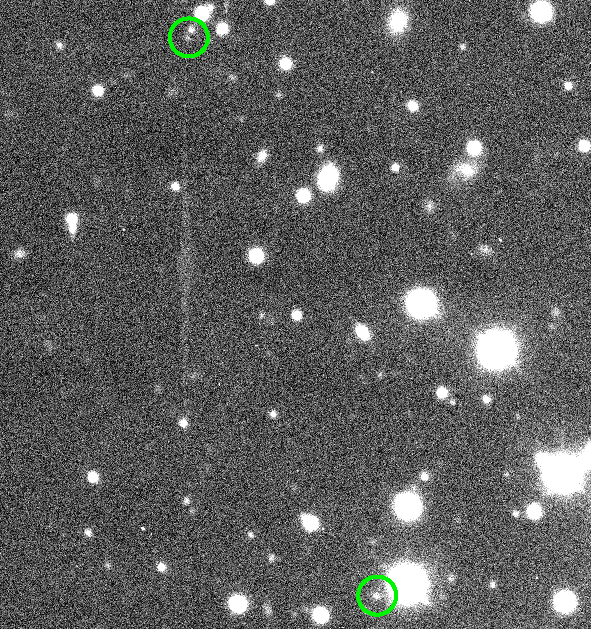For them, hunting for satellites swarming around giant planets meant using a big telescope that’s expensive to operate, Moreover, it sits high in the thin, cold air atop Mauna Kea, where astronomers are almost 40 percent of the way into space.
For you, however, the job comes a little easier (and cheaper). You can do it seated comfortably at home, computer keyboard in hand.
In the course of their searching, Sheppard and Jewitt took these three frames with the 144-inch (3.6 meter) Canada-France-Hawaii Telescope. They used a big digital camera, the CHF12K, which has a large imaging array measuring 12,228 by 8,192 pixels. The sky field shown here lies near Jupiter, which was out of view to the right (west) when the images were taken December 9, 2001.
Astronomers discover moons the same way they find asteroids, comets, and other faint, moving objects. Typically, they image one piece of the sky three times, with an hour or so between the exposures. Computer software then scans and compares the images, looking for objects that have changed position, especially any changes that occur in a pattern.
In your moon-finding, you won’t have the help of software to locate a moving object — but you also don’t have to burrow through billions of pixels in hundreds of frames either. Look closely at the three frames and try to spot changes. Don’t let random noise and image graininess mislead you. When you think you’ve found your quarry, click on the picture to load an animated GIF image to see what’s there.
In the animation, the jovian moon gliding across the top of the frame is Eurydome (S/2001 J4); the one traveling along the bottom is Hermippe (S/2001 J3). Although they appear moving together, each belongs to different family of jovian irregular moons. Eurydome is part of the Carme family and has an orbital period of 634 days, while Hermippe (orbital period 717 days) belongs to the Ananke group. Both orbit retrograde and have diameters of 2 to 3 miles (3 to 4 kilometers).










